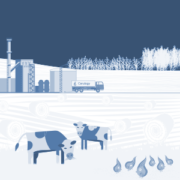The fat of the land
This study for the European Federation for Transport and the Environment (T&E) reviews the use of rendered animal fats by the EU biofuel industry, the impacts of this use on other animal fat consumers and the potential for this diversion of resources to cause indirect emissions. As featured on BBC news! You can read a […]

 Cerulogy, 2023
Cerulogy, 2023

